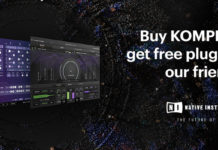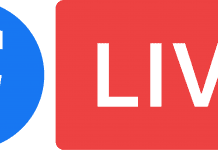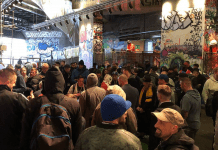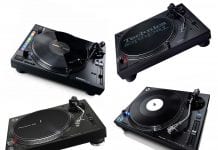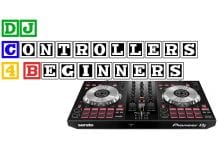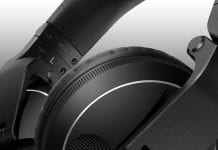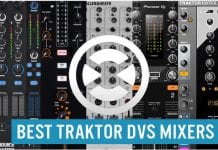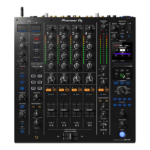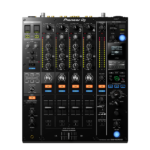It’s clear that the DJM-A9 has been designed to ensure Pioneer DJ’s products continue to dominate DJ booths and festival stages across the globe. With new technologies onboard and enhancements in every area including sound, playability, performance, and connectivity – the A9 is more than up to the job. But how does it compare to its predecessor?
We’ve put together a handy comparison table to help demonstrate the differences between the Pioneer DJM-A9 and the outgoing DJM-900NXS2. But, before we get into the versus chart, you might be wondering how Pioneer DJ conquered the DJ booth with both media players and mixers.
A brief history of the flagship DJM mixers
Not so long ago, when the CDJ-1000MK3 dominated the DJ booth as the CD player of choice, the title of industry standard mixer was still up for debate. Some sound engineers preferred the warmth of the Allen & Heath Xone:92 while others preferred mixers from companies such as Formula Sound and Rane DJ.
At this time, around 2006, the mixer line-up from Pioneer DJ was very different to the current offering – with the DJM-600 being most popular while the, pricey for the time, DJM-800 was designed to be the flagship (if we leave the FX-less DJM-1000 out of the battle).
When the CDJ-2000 and CDJ-900 ushered in the beginning of the Rekordbox era in 2009, the DJM-800 seemed to make the most sense as the mixer of choice, especially with its digital connectivity. At around this time, DVS interfaces were still widely used in clubland – DVS DJs would carry their interface for either Serato Scratch Live (as Serato DJ was known back then) or Traktor DJ. At this point in time, Rekordbox was simply a database management tool, so DVS users would connect laptops using the breakout box, rather than direct to the DJ mixer.
The DJM-2000 was Pioneer DJ’s first attempt at pushing the competition out of the DJ booth – this 4 channel beast had a built-in USB interface and was released in 2010. Back then, both Serato and Traktor would certify mixers for use, and this limited the appeal of the DJM-2000. However, this was the first time that Pro-DJ Link would be featured on a DJM, giving us a glimpse at the DJ booth connectivity that many of us take for granted now. The touchscreen for FX control (Pioneer has been pushing touchscreen tech for a while) allowed DJs to manipulate the EFX-1000 algorithms onboard with ease. Despite its popularity, the large footprint and the position of the FX section in the centre of the mixer slowed its advances into many DJ booths. Then, well Pioneer clipped the wings of the DJM-2000 with the DJM-900NXS.
Just a year after the DJM-2000 was announced, the DJM-900NXS arrived. This 12-inch footprint mixer was far closer to the DJM-800 in terms of size and layout. It boasted several new features, including a USB interface for connection to Traktor DJ and a simplified approach to Pro DJ Link (facilitating connection via an ethernet switch). The X-Pad made its first appearance, and we got a glimpse at what would quickly become the favoured layout for mixers for the majority of DJs around the world.
Two years after the DJM-900NXS was launched, Pioneer DJ decided to revisit the DJM-2000. This time, the larger footprint DJM-2000NEXUS was designed to be the ultimate club mixer. It was released to demonstrate just how powerful an integration with the newly released CDJ-2000Nexus could be. It dropped the onboard ethernet hub that had been present in the original 2000 and followed the DJM-900NXS configuration by using a single ethernet socket which could be connected to an ethernet switch. Using ProDJ Link, the synchronicity between the CDJ players and DJM-2000NXS would hint at what was to come.
A year after the DJM-2000Nexus was announced, Pioneer DJ added the DJM-900SRT to the high-end mixer line-up. The DJM-900SRT was, as anybody familiar with Pioneer DJ’s naming conventions might already be aware, a Serato certified DJM-900. Identical in every way apart from some silver fader caps, this would be the only DJM to wear the SRT suffix. Pioneer DJ now offered mixers certified for DVS use with Serato and Traktor, as well as Pro DJ Link options with serious performance features
That “sound”
In the space of four years, from the start of the Rekordbox era in 2009, Pioneer DJ released no fewer than 4 mixers. Each DJM, from the DJM-2000 through to the DJM-900NXS/SRT and the DJM-2000Nexus was designed to be the ultimate club mixer.
So, why wasn’t the industry standard title applied to any of these great mixers. Well, there was one slight problem – the “sound” of the DJM flagship mixers was not to everybody’s taste. It’s not that the DJM mixers didn’t sound great, they did. But, they were digital mixers. Every analogue signal was converted to digital on the way into these mixers and then converted back to analogue at the end of the signal path (unless the output used was digital).
If you were playing from CDJs and used a completely digital signal path, you would end up with a sound that was clinical, although many referred to it as “cold”. It was this lack of perceived warmth that allowed other brands to cling on to the space between the decks in the DJ booth. While some venues would process the digital signal with DSP equipment to tailor the sound of the DJMs, and DJs had meticulously planned sets using the Beat and Sound Color FX sections, it was ultimately the sound of the mixers that prevented total dominance. It was a problem Pioneer DJ recognised – and so they set out to change the sound characteristics of the DJM range.
Enter the DJM-900NXS2
In 2016, Pioneer DJ would release two pivotal products. The CDJ-2000NXS2 would be the pinnacle of CD/USB media players, and the last product PDJ release to feature an optical drive, while the DJM-900NXS2 would solve the “sound” issue for Pioneer DJ once and for all.
During the research and development of the DJM-900NXS2, the team at Pioneer set out with one clear goal – build the ultimate club mixer and make it sound, well, warm! In blind listening tests, several sound engineers preferred the tone of the DJM-900NXS2 over that of rival club mixers. Finally, the industry standard DJM had arrived.
Given that it took so long for the DJM-900NXS2 to conquer clubland, thanks to both its sound quality and a performance based feature set, you can understand why the R&D team at Pioneer DJ has invested so much time getting the DJM-A9 right. They’ve learned lessons from the creation of the boutique DJM-V10 mixer and applied these to the A9 – further improving the sound quality, connectivity, playability and boosting the creative potential of the mixer.
The DJM-A9 is designed to exceed the needs of today’s DJ. With features that will change the way the DJM range is viewed, the combination of the CDJ-3000 and the latest flagship mixer ensures the continued dominance of Pioneer DJ in the booth.
In case you were wondering how the DJM-A9 stacks up against the DJM-900NXS2, check out the tables below:



